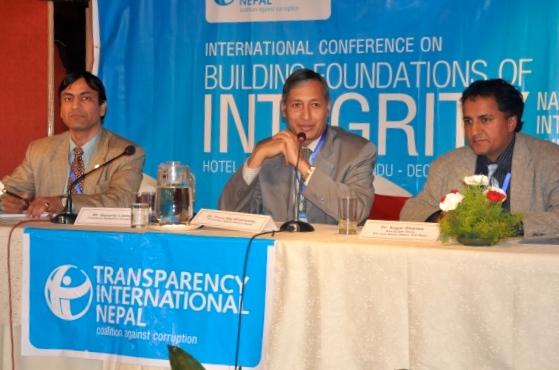Aid transparency is a critically important issue in Nepal, where foreign aid makes up 26 percent of the national budget. In June 2013, Nepal’s Ministry of Finance took a large step forward for aid transparency by making its Aid Management Platform (AMP) publicly available for the first time through a partnership between the Minsitry of Finance, AidData, and USAID's Higher Education Solutions Network. This action put specific, sub-nationally geocoded information on 700 development projects directly into the hands of development government officials, donor staff, civil society organizations, and citizens. Although the recent launch of the public AMP portal represents a step forward for aid transparency, I would argue that there is still more work to be done.
Commenting on the portal’s release, International Economic Cooperation and Coordination Division Chief and Joint Finance Secretary Madhu Kumar Marasini noted that the success of the government-led initiative required engagement from the entire development stakeholder community.
“There is a broad and active community within Nepal, ranging from civil society organizations to concerned and active citizens, that is eager to learn more about the aid scenario of Nepal,” Marasini said. “We are confident that this openness will not only strengthen accountability in the foreign aid mobilization, but it will also provide additional opportunities to make aid more effective.”
It is essential to the success of the aid transparency movement in Nepal that donors and the government commit to opening the data, but it is equally essential that this data is met by an active and capable civil society community that can use the public AMP data and other open data in Nepal to ensure that the development needs of Nepali communities are met. Kathmandu University’s Department of Development Studies is committed to this effort.
As an academic studying foreign aid and development, I see an exciting opportunity in the launch of the public AMP portal. With access to geocoded aid data, I can now conduct my research on what type of aid has been effective in which part of the country, what areas have received the most aid and what the cross-sectional aid looks like in a particular region, district, or sector. This information will make it easier for me to analyze why and how certain types of aid have been effective, and what could be done to further enhance aid effectiveness.
As the head of the Development Studies Program at Kathmandu University, I see the need to ensure that the next generation of development leaders is equipped to use these data to make evidence-based, effective development decisions. In July 2013, AidData and Kathmandu University co-hosted a workshop for civil society organizations to build their capacity to use GIS software in order to visualize and analyze aid information. Two AidData Summer Fellows worked at Kathmandu University, teaching students and faculty how to apply these skills when addressing their local development questions. As our collaboration enters its second year, we are working to design a GIS course for the Development Studies curriculum. I hope this collaboration continues until the Department of Development Studies becomes strong enough to be a center for foreign aid research and development in Nepal.

Dr. Sharma (right) presents at a Transparency International-Nepal conference.
At a recent conference hosted by Transparency International-Nepal, I presented a paper on the state of aid transparency in the country and our work with AidData. I argued that, for aid transparency to yield improvements in development effectiveness for Nepal, it requires the full support of donors, the government, and an active civil society with the capacity to use the data to advance accountability. Our partnership with AidData has strengthened the capacity of the Department of Development Studies at Kathmandu University to become a key actor in this aid transparency effort and I look forward to continue strengthening the ability of others in Nepal to join this work.
